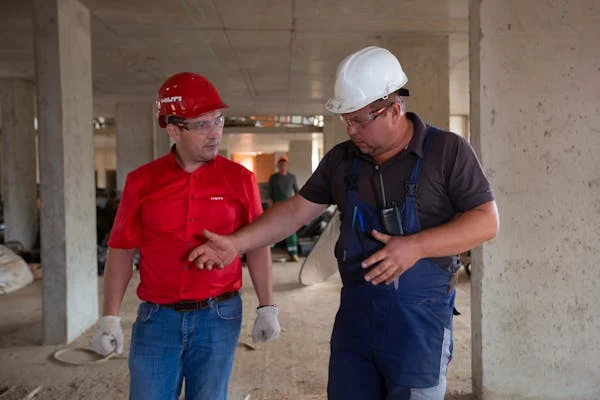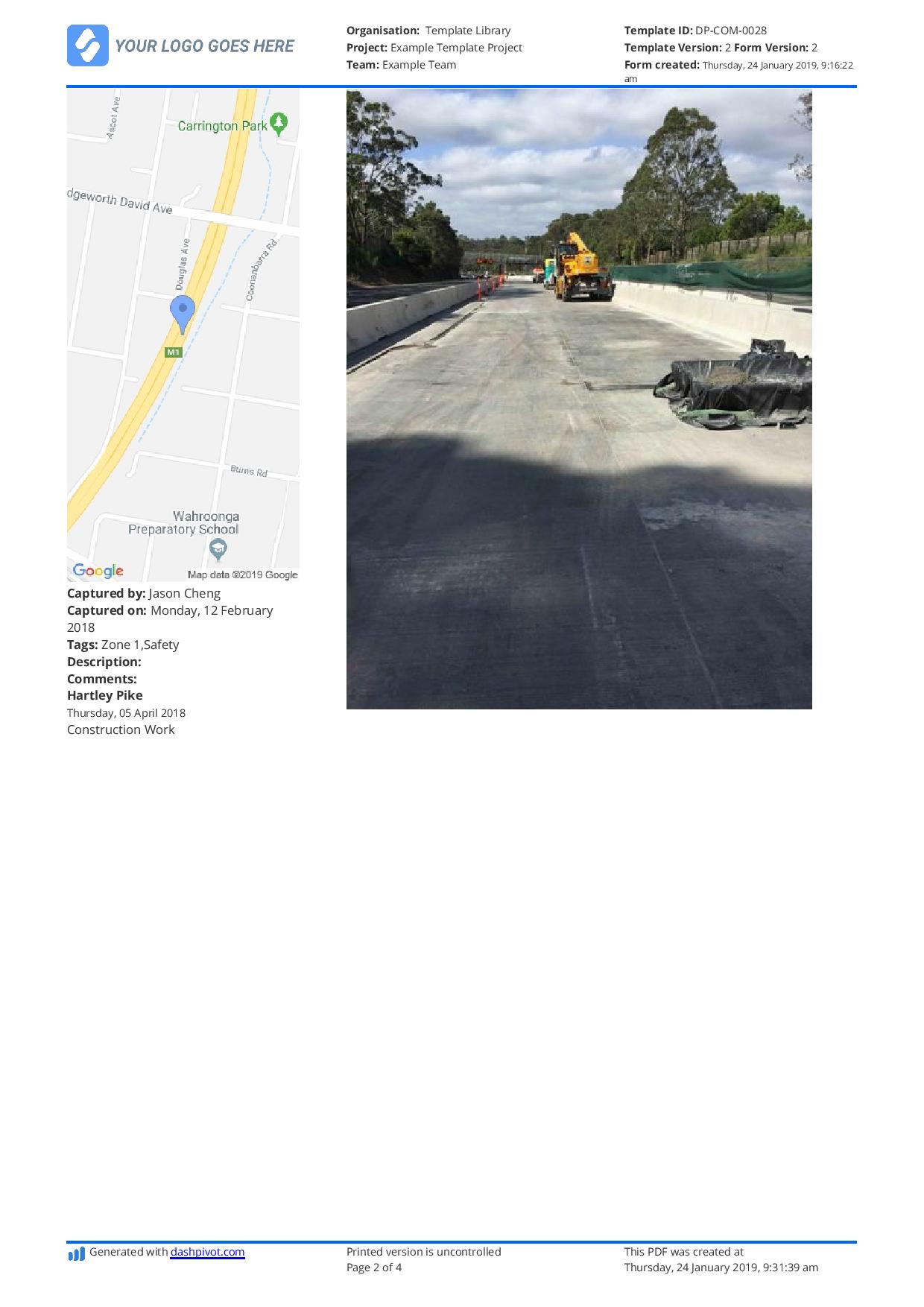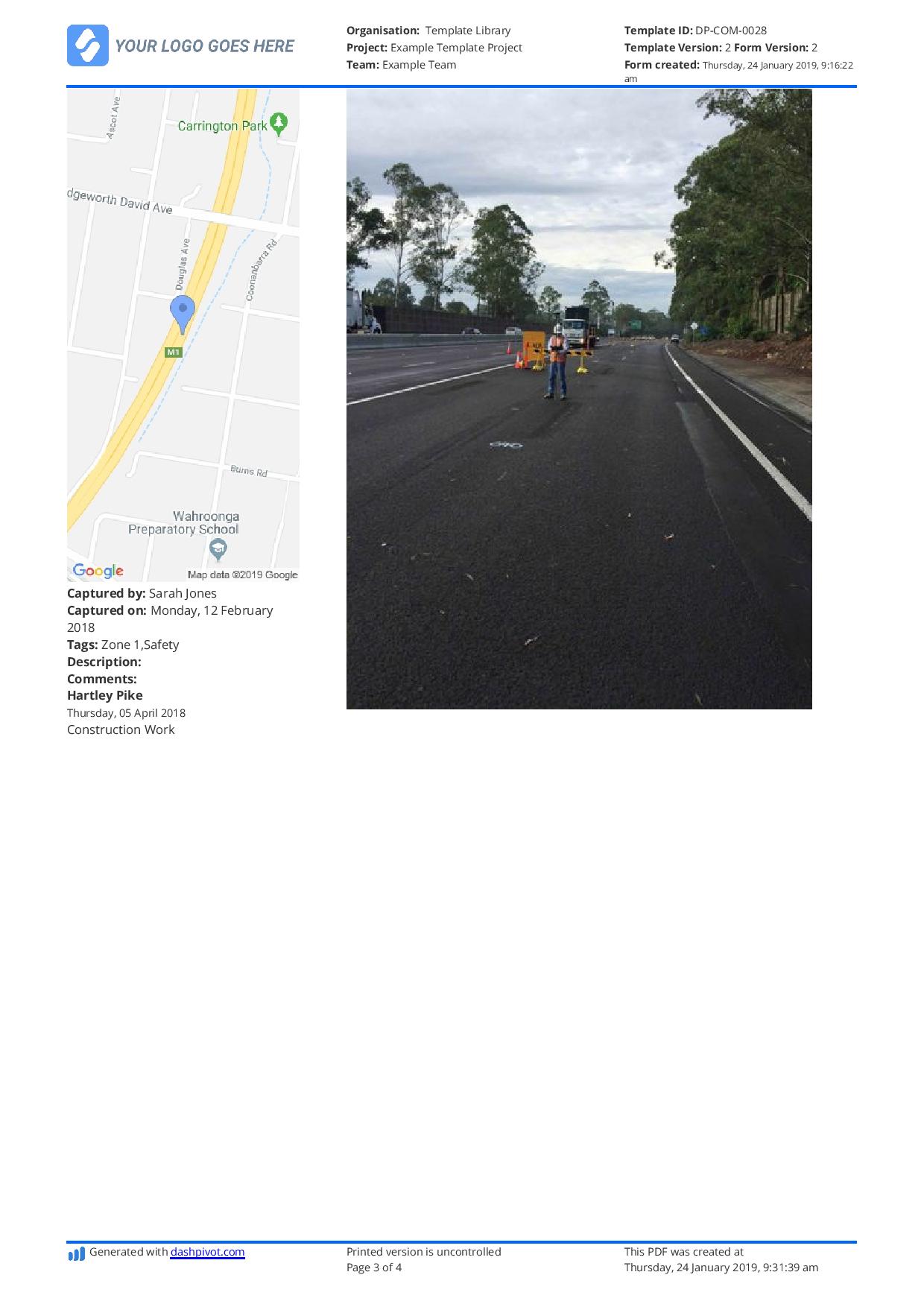Dashpivot article – Architecture Site Visit Report example & sample
Architecture Site Visit Report
In this article, discover how you can draft and create an architectural site visit report, its elements and importance, and provide resources to streamline your site visits.

How is an architecture site visit report different?
An architectural site visit report is a document used by architects when they evaluate the design elements and material quality, and if they are aligned with the architectural designs. They use the report to note the overall progress, if there are any discrepancies not aligned with the original designs.
This report’s purpose extends to conserving the communication between architect, contractors, and clients. This structured document promotes accountability between persons involved. Like any other normal site visit report, its purpose is to hold the site conditions and progress, but focusing more on the architectural aspect of the project.
What Role does a Site Visit Report Play for Architects on Projects?
An architectural site visit report documents and captures the status of the project. It fully details the completed and ongoing activities. It is also the report that assesses whether the work quality meets the approved architectural designs. Should there be any deviations from the architectural plans and building codes, the visitor should indicate them in the report.
An architectural site visit report helps visitors lay out the issues, concerns, and deviations observed during the visit and properly relay them to the stakeholders or audience intended for the report. This report promotes accountability between the contractors, workers, stakeholders, and architects involved in the project and serves as the tool for communication to avoid tiring back and forth papers between the professionals.
This report provides a unified view of the progress, and visitors should ensure the contents are clear and concise. Aside from transparent updates about the site, the report also provided actionable solutions and plans for next steps as suggested by the visitor, who could be an inspector or architect. This may include a checklist-type of list containing sketches, notes, photographs, and others that make it easier to relay or convey information to all parties involved.
What Information Should Be Included in an Architecture Site Visit Report?
An architecture site visit report includes key elements that provide proper context and clarity. Its content could be similar to a regular site visit report
For starters, an architectural site visit report should include the project name and description at the beginning of the report. It should be a brief description, not too lengthy. The project location should also be included at the beginning to indicate the location of the project, just in case there are multiple projects with the same name but in different locations. Other important details to input are the date of the visit, weather conditions, project team (architectural form or architect, project manager, or general contractor), and client information.
Secondly, visitors should write in a brief and concise manner the purpose of the visit. This explains the reason for the site visit so that the audience would know the intentions and the category of activities that should be taken note of. It could be “Progress Checking”, “Issue Resolution”, or others.
Secondly, for whatever purpose, there should still be a section to indicate the current stage of the construction and how long it is until completion or in the timeline. This may also be named as the project status summary.
Third, the observations section should clearly describe the site conditions, the quality of the materials and craftsmanship which should be aligned to the design specifications, compliance checks if the construction progress is aligned with the architectural drawings, and visual checks as references to clarify descriptions.
The issues and concerns section should contain the complete list of issues observed during the visit. This could be material defects, errors, and even safety risks. They may or may not be ordered according to priority, but there could be multiple sections for different types of issues to make it easier to organise.
In the action items and recommendations section, there should be a list of corrective adjustments for each issue observed with persons assigned to fulfil them and deadlines.
After every report, the next steps and follow-up section is required to be filled out to practice accountability and timeliness among the persons involved. This would make sure that the actionable solutions would be followed-up accordingly if they’re already completed, in progress or not.

Use a free Architecture Site Visit Report framework
What specific observations should architects document during each site visit?
For an architecture site visit report, the visitors should highlight the observations section if the progress is aligned with the design specifications, quality standards, and timeline.
Visitors should take note of the quality of the construction and workmanship of the workers on site. Confirm whether the materials match the specifications as indicated in the plans. It should be ensured they are not substituted with low quality materials.
Visitors should indicate in the observations the structural integrity and safety of the construction site and project. They should be aligned with the engineering requirements and the specifications in the design phase.
The observations section should also include the verification that the construction is aligned with the architectural plans. The dimensions and layout are true to the plans.
How Can Visual Elements Like Photos or Sketches Enhance an Architecture Site Visit Report?
Visual elements can remarkably enhance an architecture site visit report. There are some instances where descriptions in words cannot fully describe the milestone, or extent of issues or damages. Some stakeholders also prefer visual presentation to be considered as “proof”, as well as for compliance purposes.
Photos and sketches provide clarity. Considering that visitors are observing the architectural aspect of the project, visual elements are necessary to enhance quality control. Should there be a need to have adjustments or re-designs, it’s easier to visualise them with pictures involved. One can easily annotate sketches.
Should there also be any disputes, photos and sketches serve as proof. It’s the formal record for compliance and reliable documentation.
How Can Digital Tools Improve Collaboration and Communication Through Site Visit Reports?
Digitised forms can be input using the mobile or tablet, and once uploaded, it can be shared across team members even if they’re not on site. Even offline, data will be uploaded once connected to the internet. With this centralised system, it makes it easier for team members to open documents simultaneously.
Using the digitised forms Dashpivot offers, it enhances reporting transparency and accountability between you and your team. You can layer permission and allow edits from certain individuals only to avoid mistakes and wrong input in the report. This promotes accountability and gives a sense of ownership to persons involved.
With Dashpivot’s offline capabilities, you can input data even in areas with low connectivity especially on site. Data will automatically sync once you’re back online. This ensures timely updates between team members.
By streamlining the reporting process for architectural site visit reports, this improves the collaboration and communication between you and your team. This simplifies the issue tracking. You, your team members, and stakeholders can instantly communicate with each other, coordinate efforts, and manage tasks together. Streamlining using digital tools makes sure everyone is on the same page.

Site diary template
Complete and organise your daily diaries more efficiently.

Meeting Minutes template
Capture, record and organise those meeting minutes.

Progress Claim template
Streamline and automate the progress claim process to get paid faster and look more professional.

